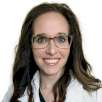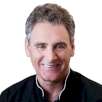As a member of the EAO Junior Committee since 2013, Dr Ferruccio Torsello was one of the tutors in yesterday’s hands-on workshop, “My first implant: GBR”. He completed a master’s programme in periodontics and implant dentistry at the Eastman dental hospital in Rome in Italy, where he is still involved in research activities. In this interview, the widely published implantologist told Dental Tribune International about the hands-on course, as well as the responsibilities of the EAO Junior Committee and its vision for the future of implant dentistry.
Dr Torsello, yesterday the EAO Junior Committee held an introductory workshop on implantology. During the workshop, which theoretical aspects were discussed with the participants?
The first part was dedicated to a theoretical overview of osseointegration, of implant surfaces, designs and connections, and of the most critical surgical and prosthetic factors that influence the treatment outcome. You can imagine that the extent of information was huge compared with the limited time of the session! The speakers gave an overview of the basic concepts with the aim of inspiring and stimulating the participants to further study this field of dentistry.
Which hands-on exercises were practised with the attendees?
The hands-on workshop allowed the 35 participants to place one or more implants in porcine jaws. Various companies had provided implants and the EAO had provided surgical materials. Via the tell-show-do approach, two tutors for each implant system explained the surgical steps and demonstrated the correct implant placement. Afterwards, the attendees were able to place implants in the porcine jaws themselves, giving each participant the opportunity to practise with at least two different implant systems.
Who was the target audience of the workshop?
Our target group consisted of young clinicians or clinicians who up until now had dedicated their time to other dental fields and wanted to have their first contact with implant dentistry. This workshop allowed them to place their first implants under the supervision of experienced clinicians. The first experience of implant placement is unforgettable for every clinician. As the EAO Junior Committee, we wanted to give young clinicians this opportunity in the EAO environment, and we aimed to leave them with a positive memory of their first experience and of our association.
During the first part of the workshop, attendees were provided with an overview of implantology. (Photograph: Franziska Beier, DTI)
Attendees prepare for the practical part of the workshop. (Photograph: Franziska Beier, DTI)
Dr Torsello shows the attendees how to use the clinical instruments. (Photograph: Franziska Beier, DTI)
Various companies provided implants and the EAO provided the surgical materials. (Photograph: Franziska Beier, DTI)
The participant places her first implant in a porcine jaw. (Photograph: Franziska Beier, DTI)
(Photograph: Franziska Beier, DTI)
(Photograph: Franziska Beier, DTI)
(Photograph: Franziska Beier, DTI)
(Photograph: Franziska Beier, DTI)
As material for the workshop you used porcine jaws. Why?
Porcine jaws are useful and widely used in hands-on exercises mainly because they are quite easily obtainable and managed and they present naturally edentulous areas where implants can be placed. Drilling into porcine jawbone allows the experience of natural bone consistency, which resembles that of human bone, and this makes the whole experience much more realistic than with plastic models.
Aside from activities like presenting hands-on workshops, what are the main responsibilities of the EAO Junior Committee?
The aim of the EAO Junior Committee is to assist and support the EAO board in achieving its mission. Our tasks are to suggest and develop new ideas, to lead projects suggested by the EAO board and encourage enthusiastic participation by young researchers in the EAO.
We are working with national dental associations to implement EAO projects at national level. For example, we will be contributing to the next congress of the Italian Academy of Prosthetic Dentistry (AIOP) with a joint session of the EAO and AIOP, which will take place in November.
One of our major projects for 2019 is the summer camp for young clinicians, which will take place in Lisbon in Portugal. It will be a fantastic opportunity for young dentists to receive top-level training in a friendly atmosphere.
You have contributed to a recent research paper titled “Guidelines for development of implant dentistry in the next 10 years regarding innovation, education, certification, and associations”. Would you please list some of the main conclusions and guidelines established?
The manuscript you mentioned arose from the previous EAO Junior Committee summer camp. The participants, who came from several European countries and the US, analysed the situation related to innovation, education, certification and associations in implant dentistry. The outcome was presented in the manuscript, which highlighted a number of aspects in each area that need improvement. For example, the conclusions call for the accreditation of structured training programmes in order to have an improved and standardised level of care in implant dentistry.
Thank you very much for the interview.
Tags:



 Austria / Österreich
Austria / Österreich
 Bosnia and Herzegovina / Босна и Херцеговина
Bosnia and Herzegovina / Босна и Херцеговина
 Bulgaria / България
Bulgaria / България
 Croatia / Hrvatska
Croatia / Hrvatska
 Czech Republic & Slovakia / Česká republika & Slovensko
Czech Republic & Slovakia / Česká republika & Slovensko
 France / France
France / France
 Germany / Deutschland
Germany / Deutschland
 Greece / ΕΛΛΑΔΑ
Greece / ΕΛΛΑΔΑ
 Italy / Italia
Italy / Italia
 Netherlands / Nederland
Netherlands / Nederland
 Nordic / Nordic
Nordic / Nordic
 Poland / Polska
Poland / Polska
 Portugal / Portugal
Portugal / Portugal
 Romania & Moldova / România & Moldova
Romania & Moldova / România & Moldova
 Slovenia / Slovenija
Slovenia / Slovenija
 Serbia & Montenegro / Србија и Црна Гора
Serbia & Montenegro / Србија и Црна Гора
 Spain / España
Spain / España
 Switzerland / Schweiz
Switzerland / Schweiz
 Turkey / Türkiye
Turkey / Türkiye
 UK & Ireland / UK & Ireland
UK & Ireland / UK & Ireland
 Brazil / Brasil
Brazil / Brasil
 Canada / Canada
Canada / Canada
 Latin America / Latinoamérica
Latin America / Latinoamérica
 USA / USA
USA / USA
 China / 中国
China / 中国
 India / भारत गणराज्य
India / भारत गणराज्य
 Japan / 日本
Japan / 日本
 Pakistan / Pākistān
Pakistan / Pākistān
 Vietnam / Việt Nam
Vietnam / Việt Nam
 ASEAN / ASEAN
ASEAN / ASEAN
 Israel / מְדִינַת יִשְׂרָאֵל
Israel / מְדִינַת יִשְׂרָאֵל
 Algeria, Morocco & Tunisia / الجزائر والمغرب وتونس
Algeria, Morocco & Tunisia / الجزائر والمغرب وتونس
 Middle East / Middle East
Middle East / Middle East
:sharpen(level=0):output(format=jpeg)/up/dt/2024/07/Dental-entrepreneurs-should-you-start-your-own-DSO.jpg)
:sharpen(level=0):output(format=jpeg)/up/dt/2024/07/Instagram-helps-researchers-evaluate-patient-satisfaction-with-clear-aligner-therapy.jpg)
:sharpen(level=0):output(format=jpeg)/up/dt/2024/07/Shutterstock_2182470657.jpg)
:sharpen(level=0):output(format=jpeg)/up/dt/2024/07/Study-examines-antibiotic-use-in-implant-dentistry-points-to-a-lack-of-guidelines.jpg)
:sharpen(level=0):output(format=jpeg)/up/dt/2024/07/Article-image_1920x1080px.jpg)








:sharpen(level=0):output(format=png)/up/dt/2023/06/Align_logo.png)
:sharpen(level=0):output(format=png)/up/dt/2019/04/logo.png)
:sharpen(level=0):output(format=png)/up/dt/2014/02/Planmeca.png)
:sharpen(level=0):output(format=png)/up/dt/2014/02/FKG.png)
:sharpen(level=0):output(format=jpeg)/up/dt/2010/02/logo-3DISC-et-baseline-fond-blanc.jpg)
:sharpen(level=0):output(format=png)/up/dt/2023/07/DirectaDentalGroup_Logo_2023_03_2lines_lowres.png)
:sharpen(level=0):output(format=jpeg)/up/dt/2018/10/The-first-experience-of-implant-placement-is-unforgettable-for-every-clinician.jpg)
:sharpen(level=0):output(format=gif)/wp-content/themes/dt/images/no-user.gif)
:sharpen(level=0):output(format=jpeg)/up/dt/2018/10/DSC_0008.jpg)
:sharpen(level=0):output(format=jpeg)/up/dt/2018/10/DSC_0019-1.jpg)
:sharpen(level=0):output(format=jpeg)/up/dt/2018/10/DSC_0030-2.jpg)
:sharpen(level=0):output(format=jpeg)/up/dt/2018/10/DSC_0033.jpg)
:sharpen(level=0):output(format=jpeg)/up/dt/2018/10/DSC_0038.jpg)
:sharpen(level=0):output(format=jpeg)/up/dt/2018/10/DSC_0041.jpg)
:sharpen(level=0):output(format=jpeg)/up/dt/2018/10/DSC_0042.jpg)
:sharpen(level=0):output(format=jpeg)/up/dt/2018/10/DSC_0044-1.jpg)
:sharpen(level=0):output(format=jpeg)/up/dt/2018/10/DSC_0059.jpg)
:sharpen(level=0):output(format=jpeg)/up/dt/2018/10/opening-ceremony-780-x-439.jpg)
:sharpen(level=0):output(format=png)/up/dt/2018/10/EAO-concensus-group-1-780-x-439-1.png)
:sharpen(level=0):output(format=jpeg)/up/dt/2018/10/Nobel-Biocare-PC-feature-image-1188x668.jpg)






:sharpen(level=0):output(format=jpeg)/wp-content/themes/dt/images/3dprinting-banner.jpg)
:sharpen(level=0):output(format=jpeg)/wp-content/themes/dt/images/aligners-banner.jpg)
:sharpen(level=0):output(format=jpeg)/wp-content/themes/dt/images/covid-banner.jpg)
:sharpen(level=0):output(format=jpeg)/wp-content/themes/dt/images/roots-banner-2024.jpg)
To post a reply please login or register